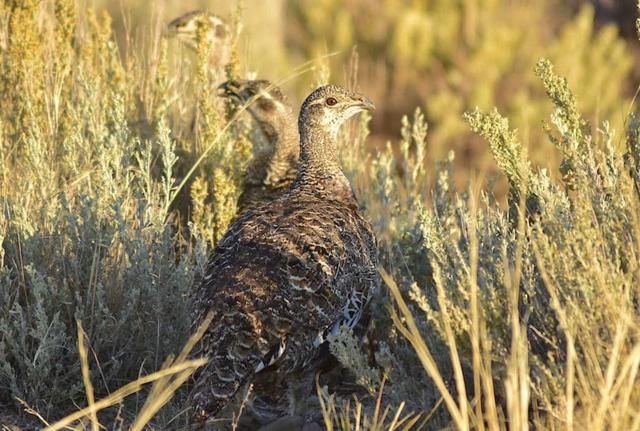Federal Sage Grouse Conservation Plans Spur Controversy in Wyoming

Plans to bolster conservation efforts for sage grouse across 65 million federal acres are drawing mixed reactions from stakeholders, ranging from accusations of being overly restrictive to criticisms for not going far enough, Gillette News Record reports.
The Bureau of Land Management (BLM) recently unveiled its final environmental impact statement (EIS), proposing updates to 77 resource management plans spanning sage grouse habitat in 10 western states. These revisions aim to reverse decades of habitat loss and population declines for the imperiled bird, which has seen its range-wide population plummet nearly 80% since 1966.
Initially, Wyoming leaders expressed cautious optimism toward the BLM’s draft plans earlier this year, hopeful that their input would shape the final revisions. However, that optimism waned with the release of the final EIS.
“The thing that changed — which changed the tenor of our comments — is that nothing changed,” said Bob Budd, chair of Wyoming’s Sage Grouse Implementation Team.
Budd noted that Wyoming had presented science-backed recommendations that were largely ignored.
Governor Mark Gordon echoed these frustrations, emphasizing Wyoming’s substantial existing conservation efforts, which include designating a quarter of the state as core habitat and investing hundreds of millions of dollars in habitat improvement.
“There is simply no need to add more designations, restrictions, and possible confusion on those landscapes,” Gordon wrote in comments to the BLM.
Despite these objections, the final plans introduce over 636,000 acres of potential “Areas of Critical Environmental Concern” (ACECs) for sage grouse in Wyoming, including a 272,557-acre designation in the ecologically vital “Golden Triangle.” This acreage was reduced from initial proposals but remains contentious.
Environmental organizations are similarly divided over the plans. Groups like Western Watersheds Project and the Center for Biological Diversity argue that the revisions fall short of addressing the sage grouse’s dire population trends, describing them as a missed opportunity.
“Letting anti-conservation states and extractive interests get their way above all else is something we expect to have to fight in the next administration,” said Greta Anderson, deputy director of Western Watersheds Project.
Conversely, organizations such as Audubon Rockies and The Nature Conservancy praised the BLM’s science-based approach, calling the plan a step toward balancing conservation with economic interests.
“With grouse populations on the precipice, now is the time for action,” said Bobby McEnaney of the Natural Resources Defense Council.
The BLM is accepting protests on its final EIS until Dec. 9. Western governors, including Gordon, will also lead a “Consistency Review” to ensure alignment between federal and state policies. That process is expected to conclude by Jan. 7, just weeks before the next presidential administration takes office.








